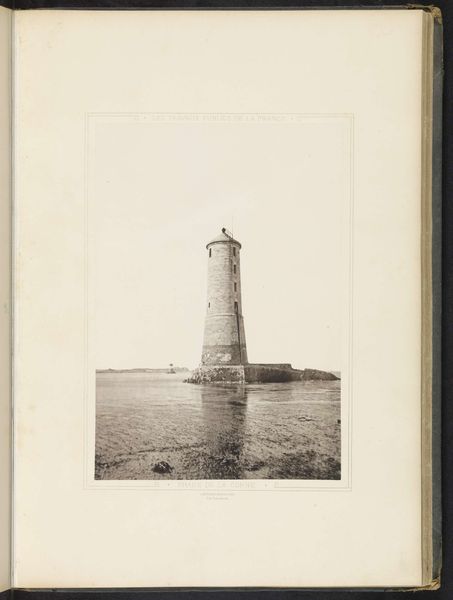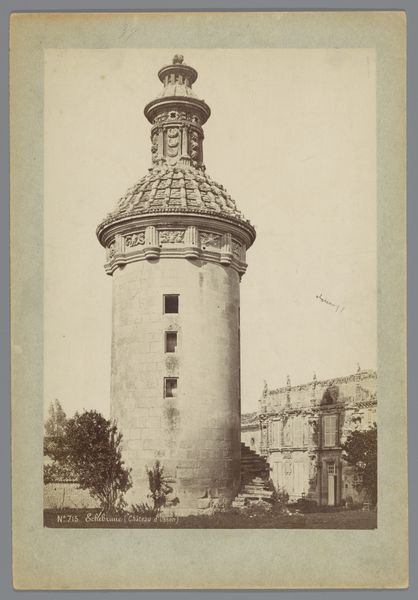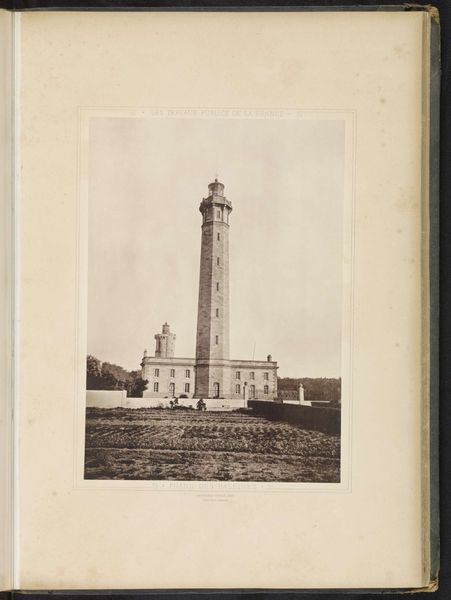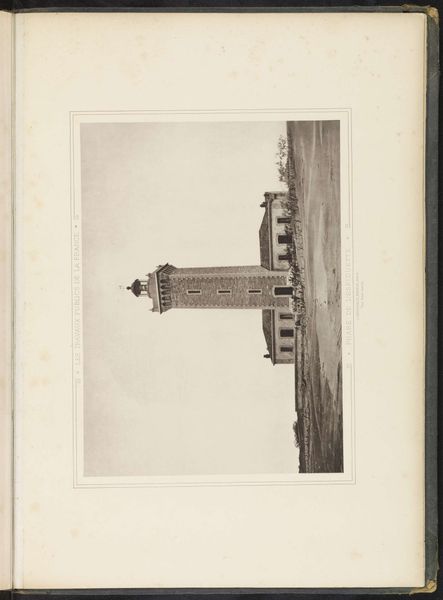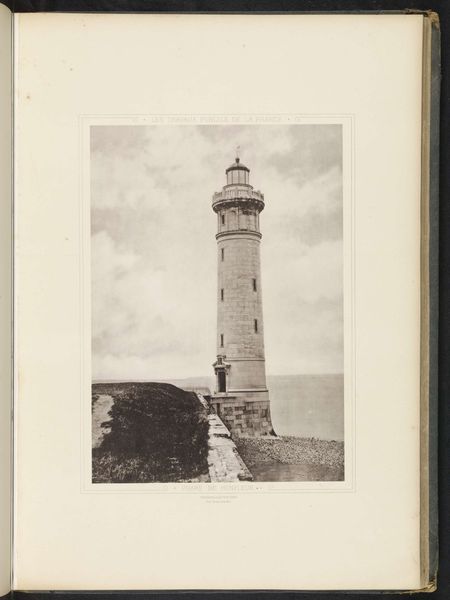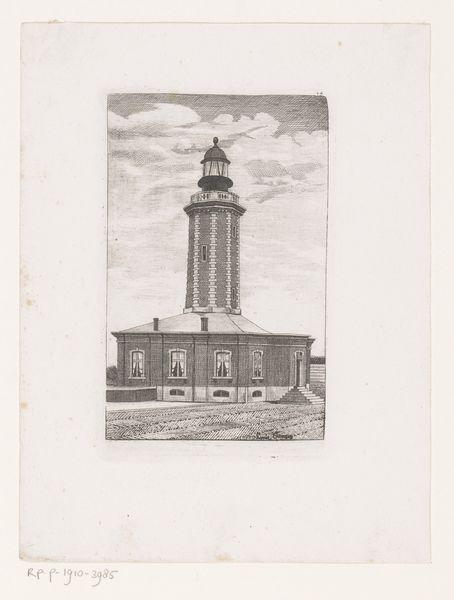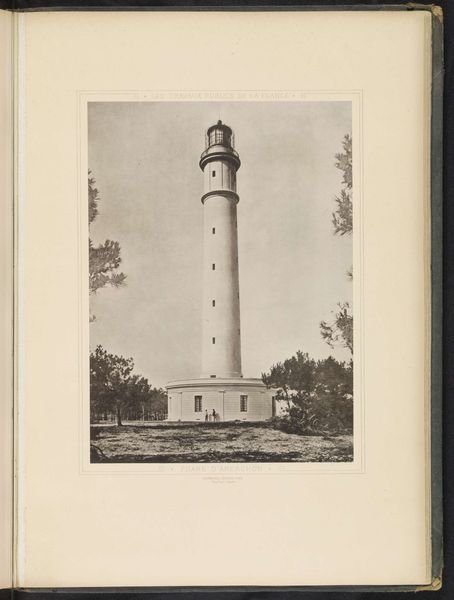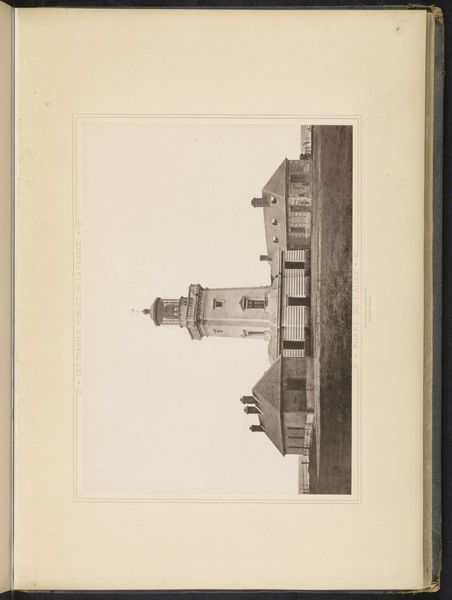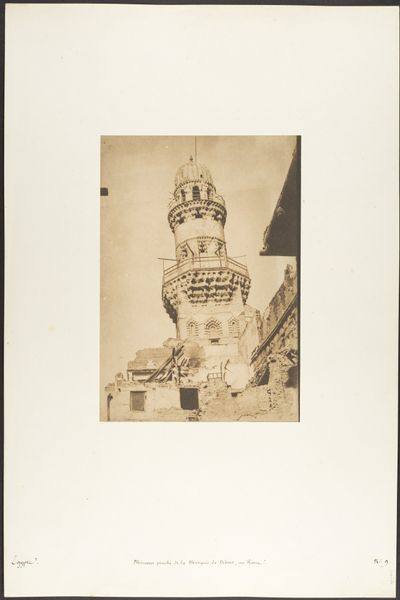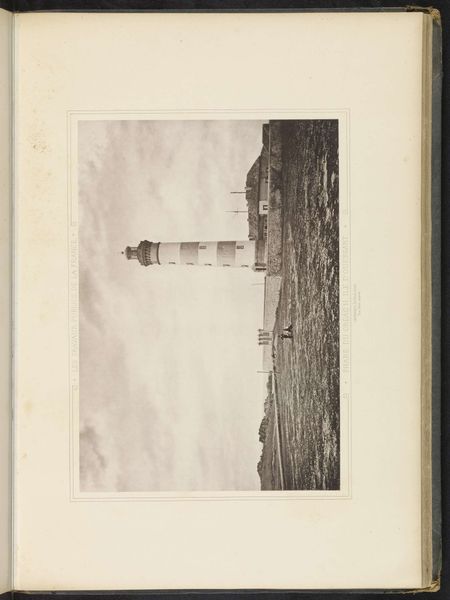
photography, albumen-print, architecture
#
landscape
#
photography
#
albumen-print
#
architecture
Dimensions: height 315 mm, width 232 mm
Copyright: Rijks Museum: Open Domain
Editor: Here we have an albumen print, predating 1883, titled "Vuurtoren van Pointe de Grave". It's quite striking how the photographer emphasizes the verticality of the lighthouse against what looks like a gathering of people in the lower portion. What formal elements stand out to you? Curator: Note the masterful way in which the photographer has used light and shadow to articulate the architectural form of the lighthouse. Observe the stark contrast between the smooth, pale surfaces and the precisely rendered details of its construction—the rhythm of the small windows, the texture of the stone, and the cast shadows. This interplay creates depth and imbues the structure with a tangible presence. Editor: The precision is indeed compelling, particularly the framing by the trees and building to the left, versus the openness on the right, almost drawing you up the structure and back down. Curator: Precisely! How does the interplay of light and shadow, balanced with a variety of natural elements, influence your perception of the subject's inherent structural integrity? Consider the photographer's deliberate placement of the structure, which encourages contemplation of the interplay between natural forms and human constructs, inviting one to assess how these entities engage in a spatial context. Editor: It emphasizes that the construction blends with its environment. I had not considered how they blend structurally with light as a connecting property, even given such dissimilar textures. Thanks for showing me new avenues in studying it! Curator: Likewise, examining such an image brings out a fresh view on the relationships between architecture and the environment.
Comments
No comments
Be the first to comment and join the conversation on the ultimate creative platform.


